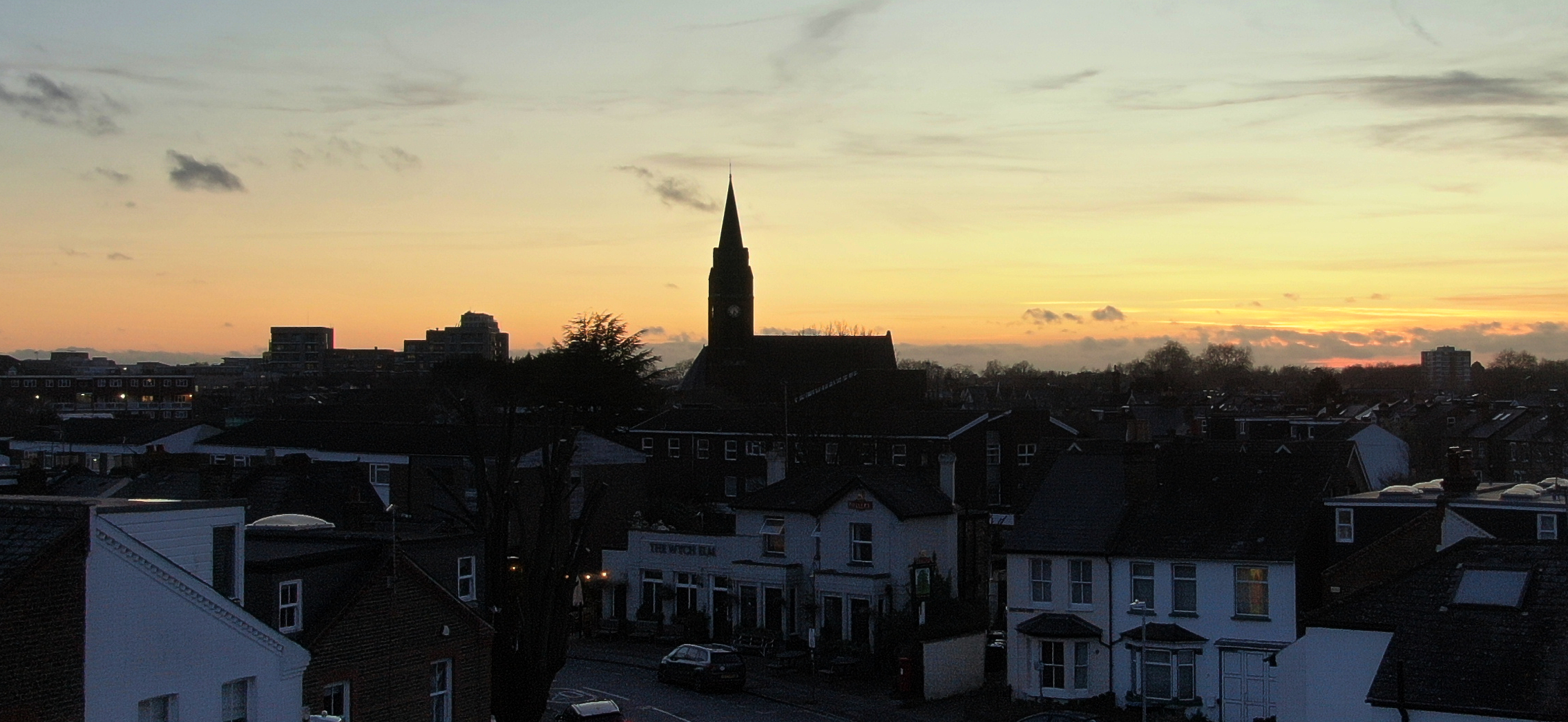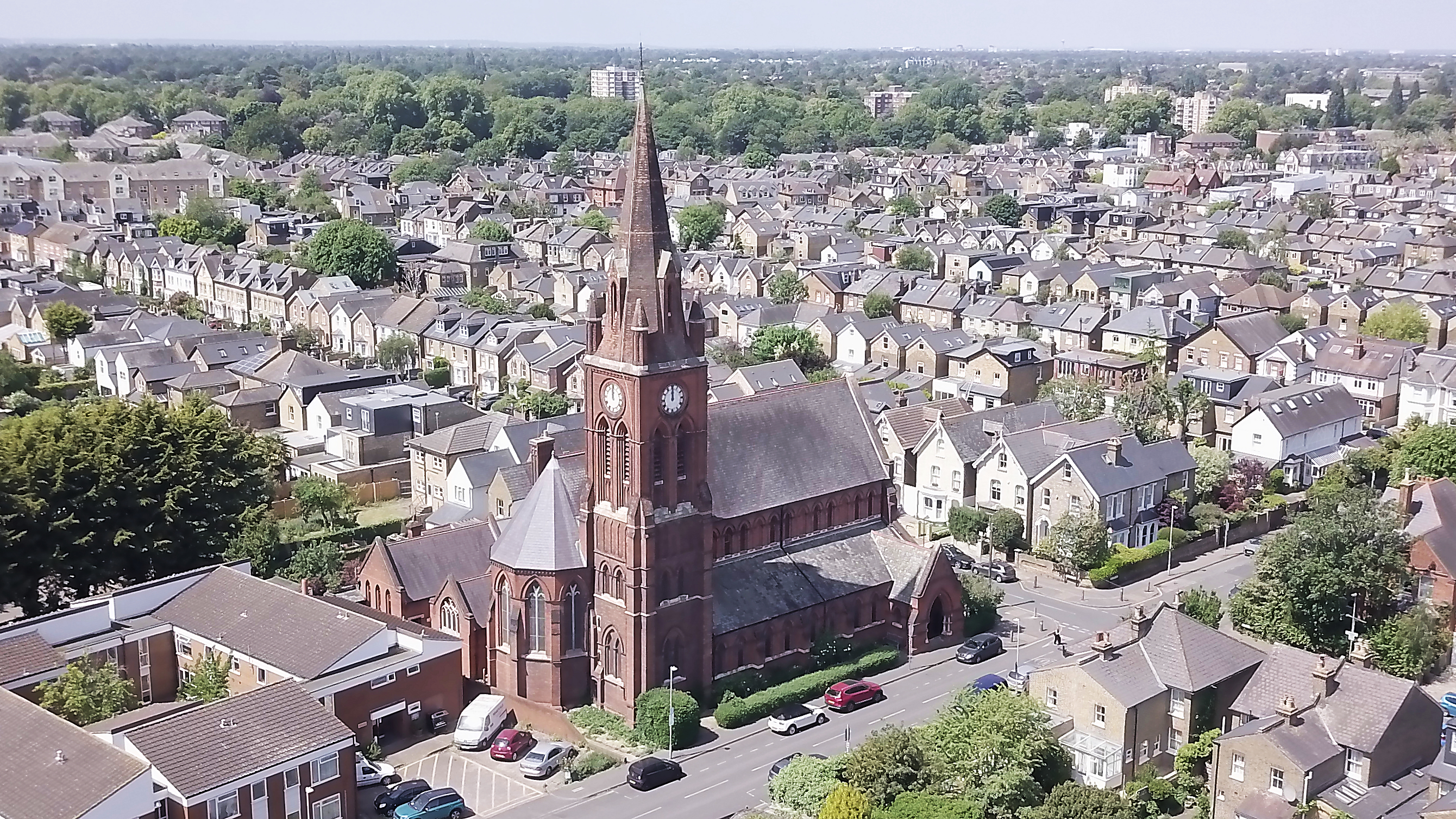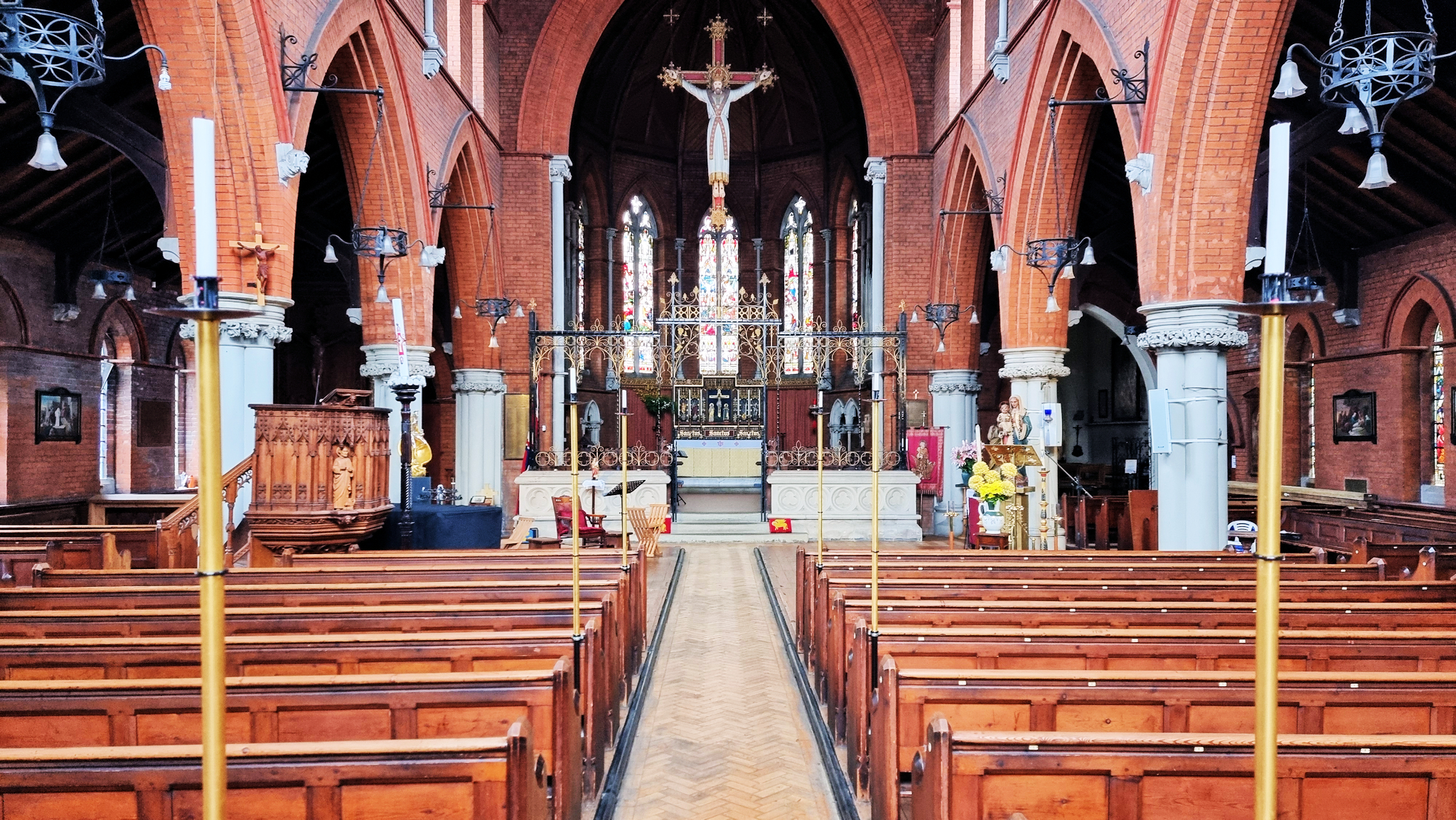
ST LUKE'S
The History of St Luke's Church
St Luke's in Kingston upon Thames is a Grade II listed Church of England church on the junction of Gibbon Road and Burton Road. A thriving parish church to this day, its history is a story of faith, sacrifice, and enduring community spirit.
This article is largely a summary of "The Highest Pinnacle", a 1979 pamphlet by June Sampson.
Humble Beginnings in the 1860s
The seeds of St Luke's Church, Kingston upon Thames, were planted in the 1860s, when local labourers and their families began meeting in a cottage on Acre Road. In 1883, the congregation moved into a second-hand iron church in Elm Road, marking the official founding of St Luke's. Despite its humble beginnings and muddy surroundings, the church grew rapidly thanks to the commitment of its parishioners.
A Church Built by Sacrifice
By 1889, the congregation - supported by small donations from poor families and larger gifts from patrons like Lady Wolverton - raised enough to build a permanent brick church on the corner of Gibbon and Burton Roads.
Lady Wolverton funded the church's distinctive brick spire, intended as a landmark for worshippers, and editor William Drewett of the Surrey Comet championed the church's mission in both press and practice.

A Church for the Poor - and the Royal
Though founded in Kingston's poorest district, St Luke's quickly attracted wide attention. It was the only Anglo-Catholic church in the borough, which drew both admiration and opposition.
It remained inclusive - Princess May (later Queen Mary) and the Duke and Duchess of Teck were regular worshippers. At the same time, many families gave what little they could - sometimes just pennies or borrowed clothes - to support the church.
Service to the Community
St Luke's was more than a place of worship. It provided essential community support, including:
- Soup kitchens and penny dinners
- Clothing and maternity clubs
- Youth outreach and Sunday school for over 1,000 children
- Social events and gatherings for local families
Controversy and Courage
The church's commitment to Anglo-Catholic worship - including candles, choirs, and choral communion - met strong opposition from conservative parishes. Despite this, under Rev. George Swinnerton, the church stood firm.
With limited external support, St Luke's thrived through local determination and remarkable lay leadership.
Legacy of Devotion
Many of the early clergy and volunteers at St Luke's endured personal hardship, illness, and early death due to the demands of parish work. Their legacy lives on in the church's rich liturgical tradition, social outreach, and physical structure.
The introduction of a nave altar in the 1970s and ongoing social events continue the church's mission of accessibility and fellowship.

Architectural Highlights
- Gothic Revival style (1889) by architects Kelly & Birchall
- Rare brick spire - once the tallest in Kingston
- Hand-carved pulpit, stained glass, and war memorials
- Nave altar from the Anglo-Catholic Congress of the 1960s
A Living Church
Today, St Luke's continues to be a vibrant hub for worship, outreach, and community engagement. It remains a testament to the faith, sacrifice, and unity of the people who built it - and those who still call it home.
Unfortunately (or for some near neighbours, perhaps less unfortunately) the church bells that chimed on the hour and the clocks on the tower ceased working in 2022 and are unlikely to be repaired.
If you have any old photos or memories of the Canbury area, please do contact me at nicoatridge@gmail.com.
.